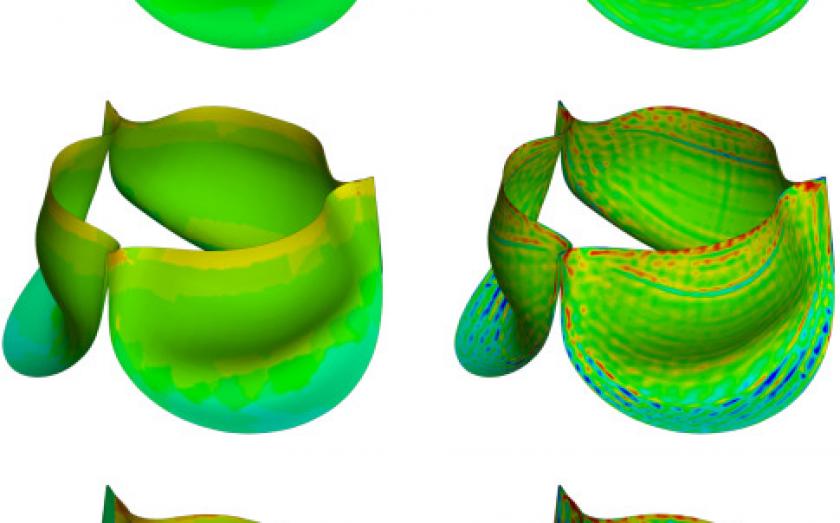BME Research Seminar Series Kicks Off with Two Translational Research Talks

Image of heart valve modeling from Kamensky et al. Projection-based stabilization of interface Lagrange multipliers in immersogeometric fluid–thin structure interaction analysis, with application to heart valve modeling. Comput Math Appl. 2017 Nov 1; 74(9): 2068–2088.
Each academic year, CBME brings a number of cutting edge researchers from within and around the Brown Biomedical Engineering community to campus for an engaging seminar series. Organized by Assistant Professor Ian Wong, this year’s seminar series will include speakers such as Brendan Harley (University of Illinois), Celeste Nelson (Princeton), and Tammy Haut Donahue (UMass Amherst).
Our seminar series kicked off on Thursday September 27th with a talk by Yuri Bazilevs. Dr. Bazilevs recently joined the Brown School of Engineering faculty as the he E. Paul Sorensen Professor of Engineering. Dr. Basilevs was trained in Mechanical Engineering, but his research work extends into clinical research and design. In his talk entitled, “Computational Fluid-Structure Interaction Methods and their Use in the Design of Cardiovascular Assist Devices,” he discussed his work in modeling fluid and structural interactions in medical devices including left ventricular assist devices (LVADs) and heart valves which point to new considerations in design of theses devices. Students and faculty alike were impressed by visual renderings of models of fluid-device interactions. Dr. Basilevs engaging talk reaffirmed the lack of formal boundaries between engineering disciplines at Brown and the potential for collaborative research with BME faculty and clinical faculty in the future.
BME seminars continued Friday September 28th with an additional talk entitled, “Design and Implementation of a Highly Miniaturized Wirelessly Powered Neural Implant” by Adam Khalifa. While the idea of localized cognitive brain function has been in existence for a while, emerging theories of large-scale brain network has opened up the new areas of understanding how cognitive functions come about from the interactions within distributed brain systems. This is crucial to understand and treat different neurological diseases, such as Alzheimer’s, and to understand mechanisms of perception, memory, reasoning etc. This leads to the rising demand for miniaturized implants for the brain, that is minimally invasive. Adam Khalifa, a PhD candidate at Johns Hopkins Whiting School of Engineering, presented his work on the development of Highly Miniaturized Wirelessly Powered Neural Implant at Brown, this Friday, as a part of the Biomedical Engineering Seminar. Khalifa’s work focuses on the development of a highly miniaturized implant for the brain, called the ‘microbead’. These microbeads are designed such that the digital circuitry is entirely bypassed, and thus enabling them to have a lower power consumption and reduce the area of the implantable device. The microbead is ultra-small that is 200 µm x 200 µm x 40 µm in size, implemented in a 130 nm CMOS technology. The idea is to be able to insert these microbeads in the brain with minimal invasion, via the use of specialized syringes, and a pulse transmission can be used to power up the microbeads once they are inserted into the brain. The micro-electronics of the microbead is on a single chip with integrated electrodes, coil and optimized wireless powering. The design concept is new compared to existing traditional design methods for neural stimulation, that uses antennas and are much larger in scale. Khalifa used the the stimulating microbead and tested it in a sciatic nerve to generate leg movement in in vivo animal study. While many challenges still persist before the technology will be ready for a human implant, the results are promising, and the microbead has the potential to eventually replace the present state-of-the-art electrophysiology setup.